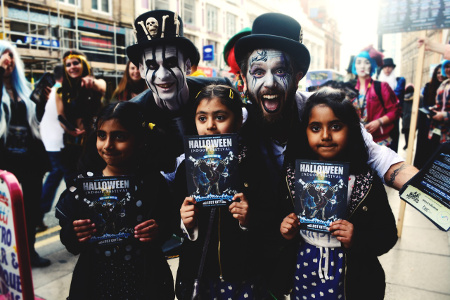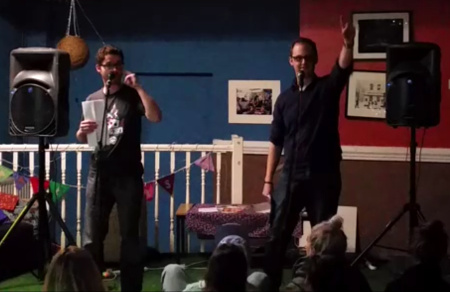Film Review: Michael
Article published: Thursday, April 12th 2012
Markus Schleinzer’s debut film Michael depicts the dull and monotonous daily routine of an insurance broker, Michael, who has a 10-year-old boy locked in the basement of his house.
%201.jpg) Bearing a resemblance to the Joseph Fritzl and Natascha Kampusch cases, the film tackles the topics of abduction and paedophilia with an inscrutable blankness that is oddly captivating.
Bearing a resemblance to the Joseph Fritzl and Natascha Kampusch cases, the film tackles the topics of abduction and paedophilia with an inscrutable blankness that is oddly captivating.
Michael (Michael Fuith) is an impassive recluse whose world and clothes bear an insipid palette of mushroom. He travels blankly from his home in the suburbs to his office and then home again. His family and co-workers are unaware of the goings on at Michael’s house; he does not have any visitors.
Interestingly, the film does not portray Michael as having a split personality that allows him to maintain a job and an air of normality. Michael is not a Jeckyll and Hyde character – a normal insurance broker, who comes home and morphs into a demonic paedophile. Instead, it’s all part of the world of one strangely blank, strangely fastidious individual.
Michael’s secret is one facet of an intricately planned, meticulously neat existence. Indeed, Francine Stock on Radio 4’s The Film Programme describes Michael’s world as one of “unnaturally ordered conformity, with more than a hint of fascism”.
The film depicts Michael’s normalisation of his secret. In a scene that mirrors the many shots of him carefully washing dishes after dinner, we see a shot from behind of him washing his penis in the sink after a visit to Wolfgang’s room. Depravity coexists with dull normality, to the point that it’s hard to distinguish one from the other. A shot of Michael frying slices of spam, for example, in the context of the film seems inexplicably gruesome.
It is the dreary monotony and seeming normality of this portrait of a sexual predator that makes the film so compelling. Director Markus Schleizner in an interview about the film on Radio 4 spoke about not wanting to demonise the central character, “Making these people monsters does not help the discussion, because a monster is a creature from a fairytale … Demonising these people just means creating a distance … we do not have to like the actions, but we have to meet them on eye level.”
But, while the film does indeed not seek to vilify the titular character, it also does not attempt to understand him. Instead, the film is an impartial observational portrait that provides no explanation for Michael’s actions. Schleizner says, “I wanted to make a movie where people could start the thinking on their own side and not thinking about someone else and judging someone else. Having biographical detail again helps the judging and again helps the possibility to create a distance. Nothing is more holy to us than our normality, so this was the idea [behind the film].”
The film is eerily banal, and the meaning of scenes in a film which refuses to guide its viewer is often oblique. For example, we see Wolfgang present Michael with a drawing of two figures for Christmas and Michael is quietly enraged. Is this because the picture’s crudeness in comparison to the detailed illustrations he keeps for himself is a small insult to his captor? Or is it that the depiction of two figures of equal height reminds Michael of the inevitable time when he no longer has a physical advantage over Wolfgang? These moments of ambiguity are absorbing and haunting as the film shows rather than tells.
Michael’s glacial stillness is deeply affecting – this is a wonderfully intelligent film.
Lucy Allan
Comments
No comments found
The comments are closed.



